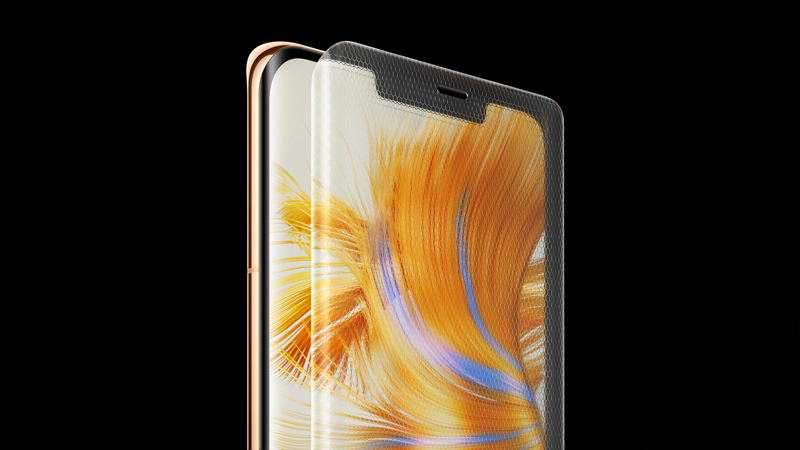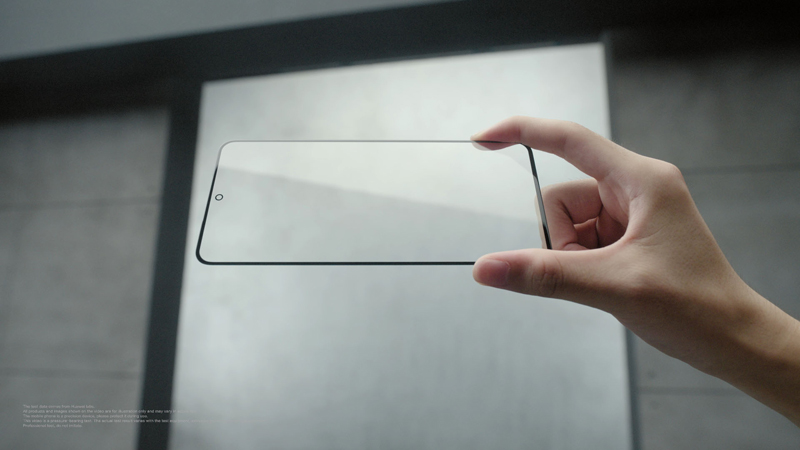MANILA, PHILIPPINES — Surveys consistently reveal that half of the mobile phone industry’s after-sales maintenance cases are related to cracked or broken screens. A simple crack on the glass is often enough to warrant a repair, or even result in the replacement of the entire screen, middle frame and even the battery.
In its tradition of launching HUAWEI Mate Series that bring generational leaps in terms of cutting-edge innovation and technology, Huawei engineers rose to the challenge to address this pain point in order to create an unbreakable screen: the Kunlun Glass.
Most glass panels within the industry are chemically strengthened through the glass surface which can resist the impact of external forces, but only to a certain extent. This is achieved by small ions replacing the larger ones on the glass surface to form a strengthening layer in a high temperature salt bath environment. However, there is a limit to the structural strength of the glass and once external forces exceed a critical level, the strengthening layer will be damaged causing cracks to spread to the interior, resulting in a glass fracture. The present thickness of a strengthening layer of a traditional glass panel is about 150 um and can only be further strengthened by a thicker strengthening layer.
Thinking outside the box
With thicker layers not being an option, Huawei engineers found inspiration from the features of reinforced concrete structures. The load-bearing walls of traditional buildings are able to maintain a stable structure even if the surface is damaged after adding a strengthening layer. Applying this to the usage of mobile phones, they applied a technical way of introducing a large quantity of nanocrystals into the glass to form a dense supporting structure, so as to improve the glass’s resistance to drops.
Traditional glass ceramics are mostly used to create exterior walls of buildings. While the strength of the glass ceramics is better than the existing glass, because of insufficient light transmittance, it does not meet the requirements to be glass panels for mobile phones as the latter requires ultra-high light transmittance glass panels.
Huawei then decided to work with enterprises that specialized in glass to develop the ideal screen for smartphones. After four years of development, they found a breakthrough in the basic glass material by introducing a specific metal oxide such as nanocrystals during the glass production process, through 24-hour nanocrystal growth at high temperatures, 108-step micro-crystalline matrix material and panel processing techniques, and 1600℃ platinum smelting technology. After going through the high-temperature heat process, the seed crystals in the glass matrix are induced to grow to the nanometer scale making it highly densified, so that the crystals are fused with the glass. As a result, Huawei engineers have successfully formulated the solution to the industry’s problem in matching the strength and optics of glass ceramics.
The Kunlun Glass coating consists of 10 quadrillion-level nanocrystals, greatly improving the durability of the glass. The strengthening process ensures that the crystal is small enough in size and high in density to form a compact structure. At the same time, it must be integrated with the glass, so to ensure light is not diffracted, resulting in insufficient light transmittance of the device. The Kunlun glass increases the drop resistance of the phone by 10 times. The HUAWEI Mate 50 Pro model with the Kunlun Glass are the first smartphones to ever garner the five-star glass drop resistance certification from Switzerland’s SGS.
Huawei’s optimization of the glass’s drop resistance represents the company’s initiative to innovate from the component level to the raw materials, which is considerably more difficult than optimizing the glass itself. It demonstrates Huawei’s determination in providing innovation that transforms users’ experience.
Stunning design, unstoppable innovation
Aside from the Kunlun Glass, the HUAWEI Mate 50 Pro has an elegant step-patterned embossing design for the first time ever, showcasing a new kind of ordered beauty that’s crafted down to the last detail. This stunning time-honored embossing process that originated in France is coupled with independent cameras to reduce the bulging effect of the lenses. Refined processes streamline the camera module, freeing up space and producing a new kind of layered beauty.
The HUAWEI Mate 50 Pro introduces a wave of new technologies, including the first-ever 10-size adjustable physical aperture, a feature that will definitely excite phone photography enthusiasts around.
Enabled by the Huawei R&D teams’ endless pursuit in continuously optimizing technology by evolving EMUI, the HUAWEI Mate 50 Pro is likewise expected to deliver a smooth performance and a seamless experience for users. Each unit also comes with an innovative battery feature that enables it to have extended use before powering down even though the battery levels are exhausted. One can also enjoy improved storage capacity technologies that will eliminate worries about lack of storage space.
Hitting our shores this November
The industry’s first Kunlun Glass is a key feature of the orange vegan leather version of the HUAWEI Mate 50 Pro which will be available on November 18. To know more about the newest Mate Series, click HERE.
Liked this post? Follow SwirlingOverCoffee on Facebook, YouTube, and Instagram.



